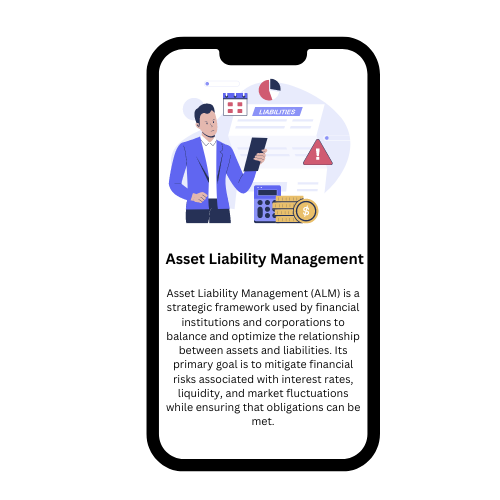Asset Liability Management (ALM) is a strategic framework used by financial institutions and corporations to balance and optimize the relationship between assets and liabilities. Its primary goal is to mitigate financial risks associated with interest rates, liquidity, and market fluctuations while ensuring that obligations can be met.
By employing techniques such as duration analysis, cash flow matching, and scenario testing, ALM helps organizations maintain financial stability and profitability. Effective ALM not only supports regulatory compliance but also enhances informed decision-making regarding investments and capital allocation, ultimately safeguarding the organization’s long-term financial health.
What is Asset Liability Management??
Asset Liability Management (ALM) is a strategic approach used by financial institutions, corporations, and individuals to manage financial risks that arise from mismatches between assets and liabilities. It involves analysing, monitoring, and optimizing the balance between these two sides to ensure liquidity, profitability, and solvency.
Importance of ALM:
- Risk Mitigation: ALM helps manage risks such as liquidity risk, interest rate risk, and currency risk by aligning the maturity and interest rate profiles of assets and liabilities.
- Maintaining Liquidity: Ensuring that the institution can meet its financial obligations when they fall due is crucial, especially for banks that need to repay depositors and for insurance companies that need to meet policy claims.
- Profitability and Sustainability: By managing the mismatches between assets and liabilities, institutions can enhance profitability, stabilize earnings, and maintain long-term financial health.
- Regulatory Compliance: Regulatory bodies (such as the Basel Committee) require institutions to maintain adequate risk management practices, including ALM, to prevent systemic risks in the financial sector.
- Capital Efficiency: By carefully managing the balance sheet, ALM helps institutions use their capital more efficiently, optimizing return on equity.
Characteristics of ALM:
- Maturity Matching: ALM ensures that the maturities of assets and liabilities are balanced to minimize the risk of liquidity gaps. For example, if short-term liabilities are funded by long-term assets, a liquidity crunch could occur.
- Interest Rate Sensitivity: ALM monitors the sensitivity of assets and liabilities to changes in interest rates, ensuring that changes in the market do not significantly impact the institution’s financial performance.
- Dynamic Process: ALM is not static but requires continuous monitoring and adjustments as market conditions, interest rates, and the organization’s financial position change.
- Focus on Both Sides of the Balance Sheet: Unlike traditional management methods that focus on assets or liabilities separately, ALM looks at both to ensure alignment and risk mitigation.
- Scenario Analysis and Stress Testing: ALM involves running simulations under different market scenarios to test how the balance sheet will respond to interest rate changes, economic downturns, or liquidity shocks.
Benefits of ALM:
- Risk Reduction: By identifying mismatches between assets and liabilities, institutions can take action to reduce risks such as liquidity shortfalls or interest rate volatility.
- Enhanced Profitability: Proper ALM practices can help institutions optimize their interest income and minimize funding costs, which directly improves profitability.
- Improved Financial Stability: A well-implemented ALM strategy ensures that the institution remains financially stable during various market cycles.
- Regulatory Adherence: Proper ALM practices help organizations meet regulatory requirements and avoid penalties.
- Better Decision-Making: ALM provides valuable insights into the financial health of the organization, enabling more informed and strategic decision-making.
Conclusion
ALM is vital for the overall health and stability of financial institutions, providing a framework for managing risks, ensuring liquidity, and optimizing profitability.







